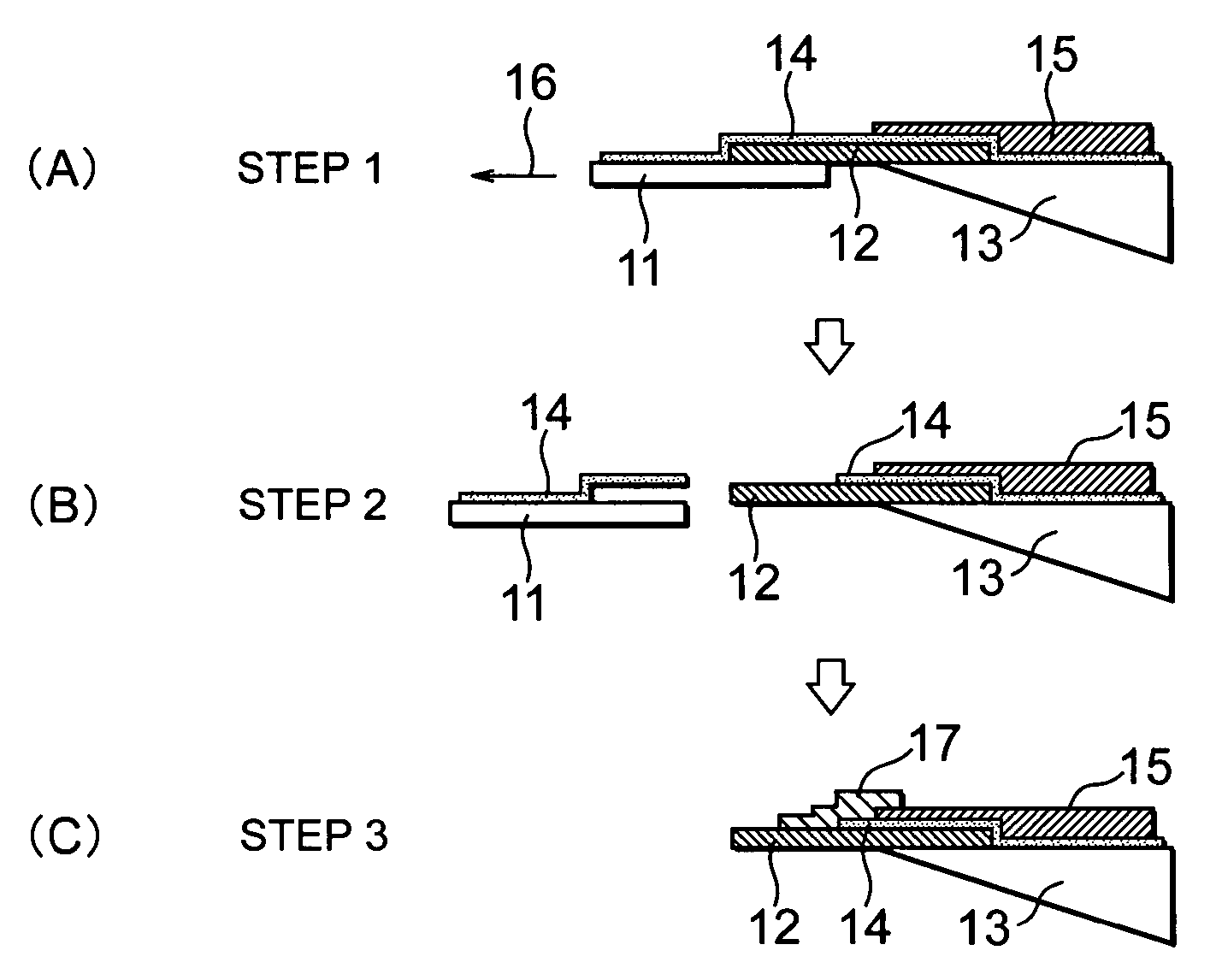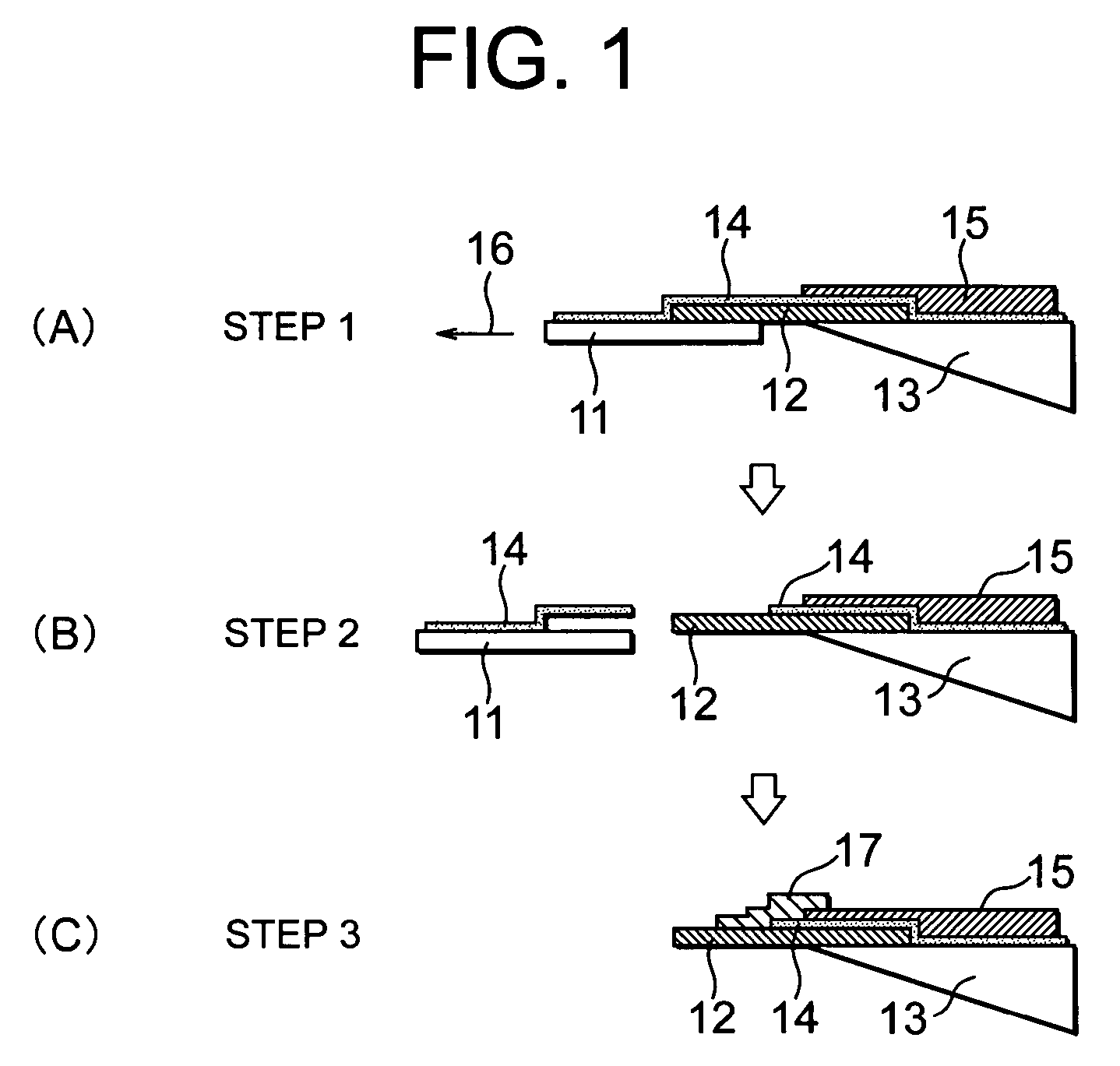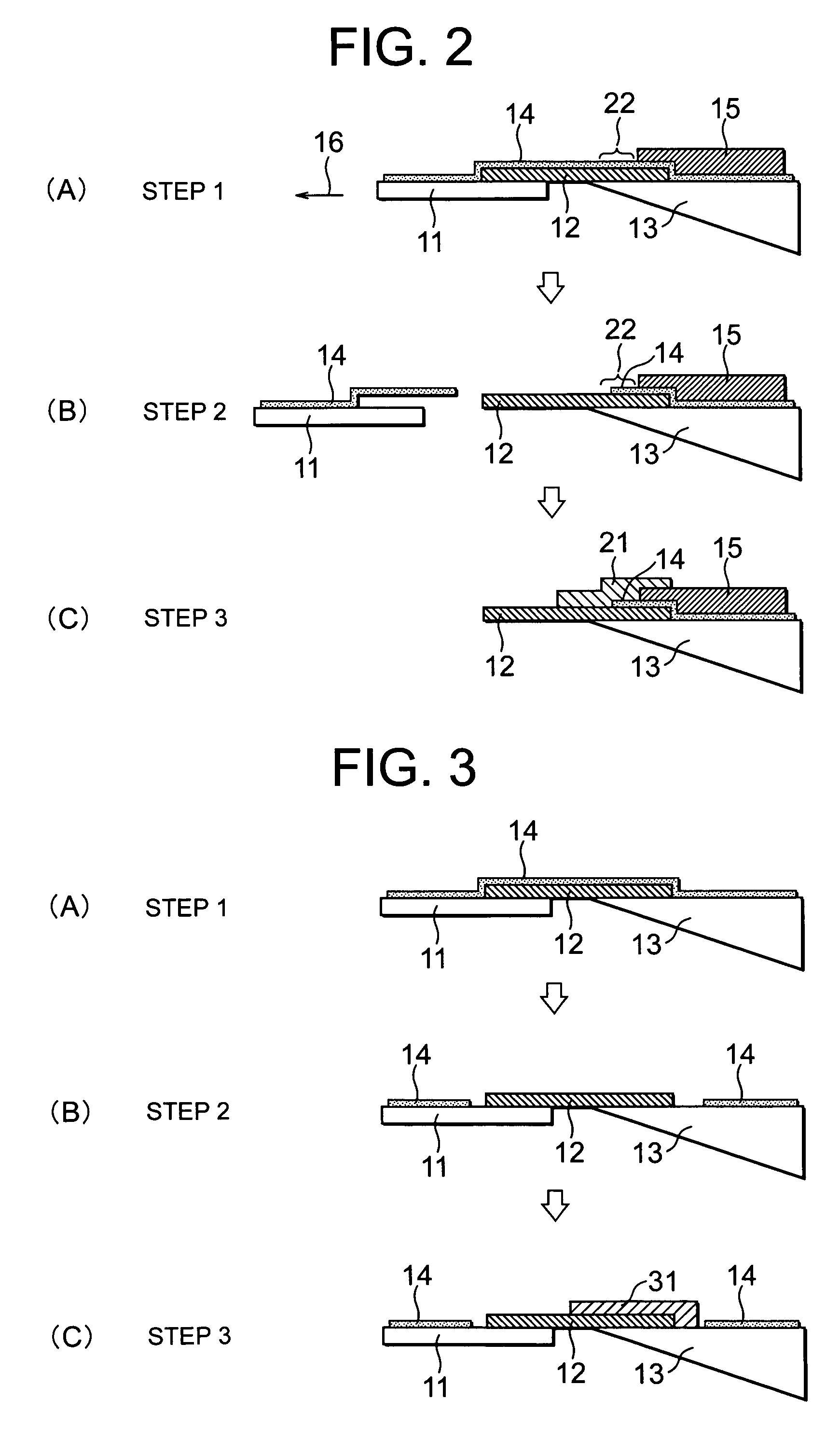Probe manufacturing method, probe, and scanning probe microscope
a manufacturing method and scanning probe technology, applied in the field of probe manufacturing methods, probes, scanning probe microscopes, can solve the problems of insufficient strength of produced probes, inability to achieve sufficient strengthening, insufficient bonding strength, etc., to improve conductivity, increase bonding strength, and improve strength
- Summary
- Abstract
- Description
- Claims
- Application Information
AI Technical Summary
Benefits of technology
Problems solved by technology
Method used
Image
Examples
first embodiment
[0032]Referring to FIG. 1, the method of producing a probe according to the present invention will be explained. In FIG. 1, 11 indicates a holder (metal sheet), 12 a carbon nanotube, and 13 a mounting base end. The carbon nanotube 12 is produced by for example the electrophoresis method and is obtained in the state attached to the holder 11. The carbon nanotube 12 is a cylindrical member with a cross-sectional diameter of 1 nm to several tens of nm. The mounting base end 13 is for example a probe tip formed at a cantilever used for an atomic force microscope. This probe tip, that is, the mounting base end 13, is usually produced utilizing semiconductor film forming technology etc. The carbon nanotube 12 is attached and bonded to the front end of the mounting base end 13, whereby a probe is assembled and produced.
[0033]In FIG. 1, three partial views (A), (B), and (C) are used to show steps 1 to 3 of the method of production. At step 1, the holder 11 is used to attach a carbon nanotub...
second embodiment
[0038]In the method of producing a probe due to the relationship of the carbon contamination film 14 and bonding coating film 15, a wide region 22 with no coating film is secured. Therefore, when bonding again by the bonding coating film 21 at step 3, the area of the surface of the bonding coating film 21 is increased and the bonding portion is formed including a part in addition to near the end of the mounting base end 13.
[0039]According to the method of producing a probe of the second embodiment, it is possible to increase the region of the exposed part of the carbon nanotube 12, possible to increase the region directly contacting the bonding coating film 21, and possible to improve the bonding strength.
[0040]Referring to FIG. 3, a method of producing a probe according to a third embodiment of the present invention will be explained. In FIG. 3, elements the same as elements explained in FIG. 1 or FIG. 2 are assigned the same reference notations and explanations are omitted. (A) t...
third embodiment
[0041]In the method of producing a probe at step 1, the holder 11 provided with the carbon nanotube 12 is attached to the mounting base end 13. At this time, the holder 11 and carbon nanotube 12 and the mounting base end 13 are bonded by the carbon contamination film 14. In this state, at step 2, before the coating work, part of the carbon contamination film 14 is removed. The carbon contamination film 14 is removed using for example a method using a focused ion beam (FIB) or a method using heating. After this, as shown at step 3, the bonding coating film 31 is formed between the carbon nanotube 12 and the mounting base end 13. After this, at a suitable timing, the holder 11 is removed.
[0042]According to the third embodiment, before the coating work for forming the bonding coating film 31, it is possible to remove part of the carbon contamination film 14 and bring the bonding coating film 31 into direct contact with the carbon nanotube 12, reliably eliminate the effect of the carbo...
PUM
| Property | Measurement | Unit |
|---|---|---|
| diameter | aaaaa | aaaaa |
| distances | aaaaa | aaaaa |
| distance | aaaaa | aaaaa |
Abstract
Description
Claims
Application Information
 Login to View More
Login to View More - R&D
- Intellectual Property
- Life Sciences
- Materials
- Tech Scout
- Unparalleled Data Quality
- Higher Quality Content
- 60% Fewer Hallucinations
Browse by: Latest US Patents, China's latest patents, Technical Efficacy Thesaurus, Application Domain, Technology Topic, Popular Technical Reports.
© 2025 PatSnap. All rights reserved.Legal|Privacy policy|Modern Slavery Act Transparency Statement|Sitemap|About US| Contact US: help@patsnap.com



